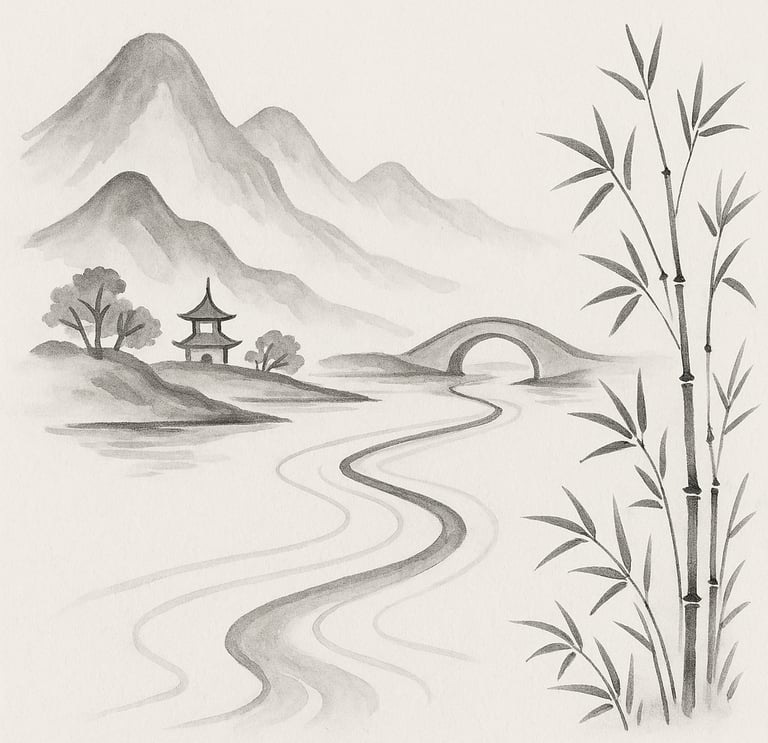The Art of Effortless Influence: Wu Wei in Leadership and Organizational Development
Rooted in Taoist philosophy, Wu Wei offers leaders a transformative approach to guiding teams—not through force or control, but by aligning with natural dynamics to foster effortless, adaptive growth.
7/3/20252 min read


The ancient Taoist philosophy of Wu Wei offers a powerful, almost paradoxical, approach to guiding teams and fostering growth. Wu Wei, often translated as "non-action" or "effortless action," doesn't imply passivity, but rather a state of harmony with the natural flow of events, allowing for spontaneous and effective responses.
At its core, Wu Wei is about understanding and working with the inherent forces at play, rather than imposing one's will against them. This resonates remarkably with Buckminster Fuller's insightful maxim: "Don't fight forces, use them." Fuller, a visionary in design and systems thinking, understood that true leverage comes not from brute force, but from intelligent alignment with existing energies.
For leaders, embracing Wu Wei means shifting from a mindset of rigid control to one of adaptive influence. Instead of micro-managing or dictating every step, the Wu Wei leader cultivates an environment where innovation and solutions can emerge organically. This involves:
Deep Listening and Observation: Attuning to the unspoken dynamics within the team and organization, identifying underlying needs, conflicts, and emerging opportunities.
Creating the Right Conditions: Rather than directly solving every problem, the Wu Wei leader focuses on establishing the frameworks, processes, and culture that empower others to find their own solutions. This might involve fostering psychological safety, promoting open communication, and providing necessary resources.
Trusting the Process: Recognizing that growth often follows unpredictable paths. A Wu Wei leader has the patience to allow ideas to incubate, for challenges to unfold, and for solutions to crystallize without unnecessary intervention.
Steering, Not Rowing: Like a skilled sailor who adjusts the sails to harness the wind rather than strenuously rowing against it, the Wu Wei leader subtly guides the organizational ship, making minor adjustments to leverage existing momentum and navigate around obstacles.
In organizational development, the application of Wu Wei can transform stagnant systems into vibrant, self-organizing entities. Instead of top-down mandates for change, a Wu Wei approach encourages:
Emergent Strategy: Allowing strategic direction to evolve from the collective intelligence and experiences of the organization, rather than being solely dictated by a few at the top.
Empowerment and Autonomy: Distributing decision-making power and fostering a sense of ownership among employees, recognizing their inherent capacity for creativity and problem-solving.
Adaptive Structures: Designing flexible organizational structures that can readily respond to shifting market conditions and internal needs, rather than rigid hierarchies that resist change.
Cultivating Flow: Identifying and removing impediments to natural organizational "flow," whether they are bureaucratic bottlenecks, communication breakdowns, or misaligned incentives.
By adopting the principles of Wu Wei, leaders and organizations can move beyond the exhausting cycle of fighting against resistance and instead learn to "use forces" – the collective intelligence of their people, the dynamics of the market, and the natural evolution of their own systems. The result is not inaction, but a more profound, sustainable, and ultimately effortless form of influence that leads to true growth and resilience.